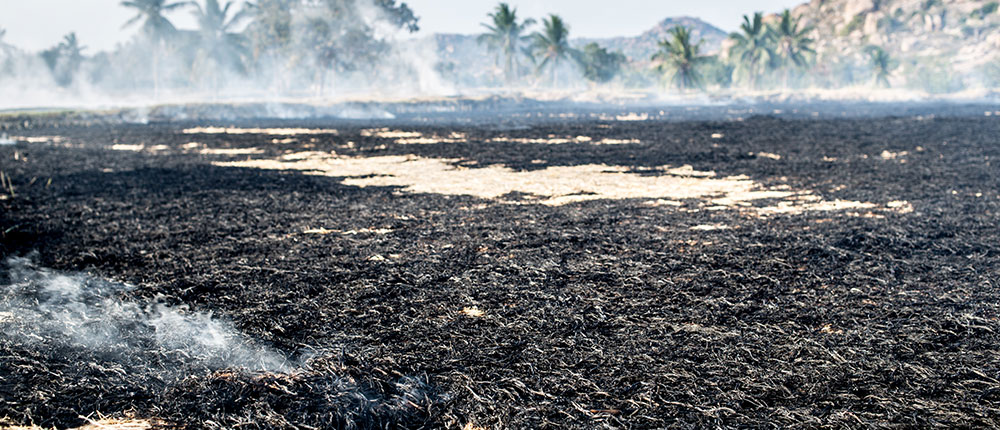Intensive research explorations are being carried out at TERI for hydrogen production from agri-residue woody biomass

India generates over 350 million tonnes of agricultural waste annually, of which a large amount is burnt. It is by now well known that stubble burning of biomass residue poses a great threat to the environment. Emissions from biomass burning contribute significantly to the release of particulate matter (PM) 2.5 and 10 as well as gaseous air pollutants such as nitrogen oxide (NOx) and, sulphur oxide (SOx), which leads to serious health hazards. In the past few years, concerns have been raised regarding the handling of agriculture waste biomass residue in a safe and sustainable manner.
A variety of agriculture waste such as rice straw, wheat straw, sugarcane bagasse, sugarcane trash, sorghum stover, and cotton stalk can serve as good raw material for hydrogen production. They are abundantly available and are of low commercial value.
Why hydrogen?
Currently, 96 per cent of global hydrogen is produced from fossil fuels, either directly or indirectly (48 per cent from natural gas, 30 per cent from oil, and 18 percent from coal). Only four per cent is produced from water electrolysis. Almost half of the hydrogen produced globally is utilised in ‘Haber process’ to produce ammonia (to use directly or indirectly in fertiliser industry) and the other half for ‘hydrocracking’, which is the conversion of heavy petroleum to lighter fractions to make it usable as fuel, and for desulphurisation of diesel to reduce the polluting sulphur content. Hydrogen can also be used in power generation. Considering these needs, the hydrogen economy has become a global concern now. This calls for generation of hydrogen from non-edible renewable based feedstock in a sustainable manner.
Agricultural waste
The amount of waste woody biomass produced in India (agri-residue) has the potential to provide a good source of feedstock for biofuel production as certain microbes have the potential to feed on glucose and xylose sugar present in such biomass, for production of fuel. Most microbes can feed on glucose, but only rare microbes have the potential to feed on xylose (pentose sugar). Hence, it is essential to explore for microbes that can feed on both xylose and glucose for efficient production of clean hydrogen from agro waste woody biomass.
In light of this, intensive research explorations are being carried out at TERI for hydrogen production from agri-residue woody biomass (second generation feedstock). This research is being funded by Department of Biotechnology, Ministry of Science and Technology, Govt. of India. These research explorations have led to isolation of a unique microbe 'Enterobacter cloacae' that can feed on both xylose and glucose sugars. During its life cycle, this microbe releases extra energy in the form of hydrogen.
This microbe was domesticated at TERI’s laboratories to produce clean hydrogen. Apart from rice straw, wheat straw, sugarcane bagasse, sugarcane trash, and sorghum stover, it can also utilise broad spectrum agri-waste biomass sugars, aquatic plant biomass, and de-oiled third generation biomass to generate clean hydrogen. Further research explorations have been carried out at TERI to scale up this form of hydrogen production from the pre-pilot scale as it has shown potential in the pre-demonstration scale.
Currently, cost is one of the challenges, but maturation of this technology will contribute towards cost reduction of this process, which is essential for commercialisation and mass usage of this technology.
